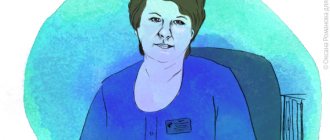For many people, summer means warm, comfortable days that are ideal for eating al fresco or taking long walks during breaks in the air-conditioned office.
But for some of us, summertime means working outside in direct sunlight or repairing buildings without cooling systems.
Working in high temperature environments can pose a particular safety and health hazard because it interferes with the body's most important system, the thermoregulation system.
This article provides an overview of various heat stress-related illnesses and injuries and provides recommendations for recognizing and preventing them.
What is heat stress (overheating, hypothermia)?
Heat stress is a condition when the body cannot get rid of excess heat. When this happens, your body temperature rises and your heart rate increases.
As the body continues to accumulate heat, the person begins to lose concentration and has difficulty concentrating on any task, may become irritable or sick, and often loses the desire to drink. The next stage most often is fainting and even death if the person has not cooled down.
Factors that contribute to heat stress include high air temperature, radiant heat sources, high humidity, direct physical contact with hot objects, and strenuous exercise.
Precursors of epileptic seizures
The first harbinger of epileptic seizures is an aura. It is individual for each patient. Thanks to the constant warning signs, patients can warn others about the onset of an attack or independently move to a safe place.
There are the following types of aura that precede the onset of an epileptic attack:
- Hallucinations;
- Sharp contraction of the muscles of the upper or lower extremities;
- Repeating the same movements;
- Burning, crawling or tingling sensation in various parts of the body;
- Sharp deterioration in mood.
The duration of the aura is several seconds. During this time, patients do not lose consciousness.
How the body reacts to high temperatures
Four environmental factors influence the level of stress a worker experiences in a hot work area: temperature, humidity, radiated heat (such as from the sun or furnace), and wind speed. People with high blood pressure or certain heart conditions and people who take diuretics (water tablets) may be more sensitive to the effects of heat. Measuring the climate in the workplace is the first step towards preventing heat stress-related illnesses.
The body protects itself from heat through three mechanisms: breathing, sweating, and changes in blood flow. The first reaction is blood circulation to the skin, which raises the skin temperature and allows the body to release some heat. During hard work, muscles need more blood flow, which reduces the amount of blood available to reach the skin and generate heat.
Sweating also helps the body cool down, but only when humidity levels are low enough to allow sweat to evaporate and if the water and salts lost through sweating are replaced.
Causes
One of the main causes of epilepsy is considered to be a hereditary predisposition: if parents have a history of seizure symptoms, then the child is more likely to develop them. Epilepsy also develops under the influence of the following reasons:
- Traumatic brain injury;
- Cerebrovascular accidents;
- Cerebral vascular dysplasia;
- Volumetric formations in the cerebral cortex;
- Neurosurgical intervention;
- Infectious diseases of the central nervous system;
- Previous ischemic or hemorrhagic stroke.
The occurrence of epileptic attacks is caused by the presence in the cerebral cortex of a stable focus with epileptic activity. Convulsive activity from the primary focus can spread through commissural fibers, cortical neuronal complexes, and the centrencephalic system of the brain. In the presence of increased convulsive activity over a long period of time, secondary lesions arise. They can, under the influence of certain factors, become independent and independent. As a result, the attack in the primary focus fades, but not in the secondary. This picture is observed in patients after two years of illness. Over the course of some time, tertiary foci of seizure activity may develop in the cerebral cortex.
Epilepsy can develop under the influence of the following provoking factors:
- Hormonal imbalances;
- Alcoholism and drug addiction;
- Chronic stress;
- Excessive emotional stress;
- Chronic fatigue.
Secondary attacks of epilepsy occur in patients suffering from brain tumors, cerebral vascular pathology, after hemorrhage in the head, due to poisoning with toxic substances.
It is very important to identify the disease early to reduce the likelihood of complications. Which doctor treats epilepsy? For quality therapy, it is necessary to be observed by a neurologist, epileptologist, or psychotherapist. As clinical symptoms progress, assistance from a physiotherapist or pharmacologist may be required.
Heat stress and illness
When the body overheats, a state of heat stress occurs. Heat stress can lead to a number of problems, including heat exhaustion, heat stroke, seizures, fainting, or rashes. Many people confuse these disorders, but it is important to be able to recognize each and know what to do when it happens. Each of these heat stress disorders is described below.
Heat exhaustion
Although not the most serious health problem, heat exhaustion is the most common heat-related illness. Heat exhaustion occurs when temperature and relative humidity are not controlled and a worker sweats a lot and does not drink enough fluids or take in enough salt, or both. An easy way to determine this is to look at the worker: he will be wet, pale and weak.
Signs and symptoms:
- sweating,
- Weakness or fatigue, possible confusion,
- Nausea,
- Normal or slightly higher body temperature,
- Pale, clammy skin (sometimes red).
What to do:
- Let it rest in a cool place,
- Give the electrolyte solution to drink. Avoid caffeinated drinks such as cola, iced tea or coffee.
- In serious cases involving vomiting or loss of consciousness, call 911 and transport the worker to a medical center, as appropriate.
Heatstroke
Heat stroke is the most serious health problem for people who work in hot weather, but not very often. It is caused by the body's inability to regulate the temperature of its systems. Sweating stops and the body cannot get rid of excess heat. Victims will die if they do not receive proper treatment immediately. If a worker is exposed to high temperatures, measuring the intensity of thermal exposure can help prevent heat stroke.
Signs and symptoms
- Confusion, delirium, fainting, or seizures.
- Body temperature is 41.1ºC or higher.
- Hot, dry skin, usually red or bluish in color.
What to do:
- Call an ambulance immediately.
- Move the victim to a cool place.
- Cool the victim with cool water.
- Fan the victim vigorously to increase cooling.
Heat cramps
Heat cramps are painful muscle spasms. They occur when a worker drinks a lot of water but does not replace the salts lost from sweating. Tired muscles—those that are used to do work—are usually the most likely to cramp.
Signs and symptoms:
- Cramps or muscle spasms.
- This may happen during or after work.
What to do:
- Drink an electrolyte solution.
- If the cramps are severe or do not go away for a long time, seek medical attention at a health center.
Fainting (loss of consciousness)
Fainting usually happens to someone who is not used to working in a hot environment and is simply standing nearby. Moving, as opposed to staying still, usually reduces the likelihood of fainting.
Signs and symptoms
- Brief loss of consciousness.
- Sweaty skin, normal body temperature.
- There are no signs of heatstroke or heat exhaustion.
What to do:
- Lie down in a cool place.
- Seek medical attention if the victim does not recover after a short rest.
Heat rash
Heat rashes, also called heat urticaria, can occur in hot, humid environments where sweat does not evaporate easily. This usually occurs if the measurement of air speed is ignored, which prevents adequate measures from being taken. When the rash covers a large area or if it becomes infected, it can become very uncomfortable. Heat rash can be prevented by resting in a cool place and drying the skin.
Signs and symptoms:
- A rash with small pink or red bumps.
- Irritation or tingling sensation.
- Itching.
What to do:
- Keep skin clean and dry to prevent infection.
- Wear loose cotton clothing.
- Cool baths and air conditioning are very beneficial.
- Some over-the-counter lotions can help relieve pain and itching.
Nocturnal epilepsy
In one third of patients, epilepsy attacks occur at night. Pathological signs may appear when falling asleep, during sleep, or during awakening. Nocturnal epilepsy occurs under the influence of the following factors:
- Hereditary predisposition;
- Suffered traumatic brain injury;
- Excessive consumption of alcoholic beverages;
- Sleep disorders;
- Prolonged psycho-emotional stress.
The duration of a nocturnal epilepsy attack varies from a few seconds to five minutes. Most patients do not remember the seizures that occurred. Some people clearly describe the sensations they experience. An epileptic attack that occurs during a dream is accompanied by the following manifestations:
- A sharp, causeless awakening;
- Feeling of nausea, which may result in vomiting;
- Severe headache;
- Tremor;
- Pronunciation of unusual sounds;
- Speech impairment.
During a nocturnal epilepsy attack, patients may perform rash actions. They get down on all fours or pretend to ride a bicycle. You can suspect the presence of a nocturnal attack based on the following indirect attacks:
- Tongue bite:
- Traces of blood on the pillow after waking up;
- Bruises and abrasions on the body;
- Painful muscle syndrome;
- Wet bed due to loss of urinary control;
- Uncontrolled urination;
- Waking up in an unusual place (on the carpet, on the floor).
These symptoms are individual for each patient. They appear with one degree or another. Therefore, neurologists believe that nocturnal epilepsy attacks are very difficult to diagnose.
Rolandic epilepsy
Epilepsy of this type is focal and genetically determined. It manifests itself in rare attacks at night, they affect one half of the face with the tongue and pharynx. The Rolandic type is characterized by partial epileptic seizures without loss of consciousness.
The first sign of onset is tingling or numbness on one side of the face, lips, gums, or tongue. Afterwards motor paroxysms develop.
Make an appointment
Forecast
The prognosis for epilepsy if you follow medical recommendations and take medications in a timely manner is favorable.
To do this, it is important for a person to maintain a careful attitude towards his health: maintain a daily routine, have adequate sleep, avoid overexertion, and completely give up bad habits such as cigarettes and alcohol. Loss of ability to work depends on the frequency of attacks: if they are episodic and occur at night, then there are no contraindications to performing work functions. Daytime attacks with loss of consciousness cause limited choice of work.
In most clinics, patients with epilepsy are seen by neurologists or psychotherapists, who sometimes find it difficult to understand the details of diagnosis and the intricacies of treatment of this disease. Just one EEG requires enormous experience and skills of a professional. Therefore, the Yusupov Hospital employs highly specialized epileptologists who can answer all your questions. You can make an appointment with them by calling the Yusupov Hospital.
Make an appointment
Diagnostics
Diagnosis of the disease occurs by taking an anamnesis. The specialist listens to complaints, on the basis of which a preliminary diagnosis can be made.
After this, the patient is sent for laboratory and hardware examinations, which makes it possible to differentiate epileptic seizures from other pathologies, allows one to find out the cause, the nature of the changes, determine the form and prescribe treatment.
The diagnosis is made by neurologists and epileptologists who determine the causes of epilepsy in adults using indications obtained from a comprehensive comprehensive examination.
Instrumental diagnostic methods
The safest hardware diagnostics is an EEG. It has no contraindications; it can be used to detect areas of paroxysmal activity. These can be sharp waves, spikes, slow waves. Modern EEG makes it possible to identify the exact localization of the pathological focus.
The most informative neuroimaging method is brain MRI. The study allows us to identify the initial cause of the deviation and determine the location of the lesion in the central nervous system.
Laboratory diagnostic methods
Epilepsy occurs under the influence of various reasons; in order to identify the presence of infection, inflammation, hormonal imbalances, genetic defects, the patient needs to take a general blood test, biochemical, molecular genetic, and check the tumor marker.
Why is an epileptic seizure dangerous?
During a tonic-clonic seizure, breathing stops, and in all other seizures with convulsions, additional trauma is possible due to hitting the head on a hard surface. Falls from one's own height and loss of consciousness are also dangerous. Each seizure that occurs damages the neurons of the brain, which subsequently leads to a decrease in cognitive and mental abilities, and changes in the psyche.
This does not prevent patients with epilepsy from leading an active life. However, some aspects are limited - it is prohibited to drive a car and work in production in workshops, with open fire or at height, as well as in work that requires frequent switching of attention. Properly selected therapy can increase the interictal period by months or even years.
Make an appointment
Other types of epilepsy
Temporal lobe epilepsy
It is characterized by the localization of the focus of epileptic activity in the temporal lobe of the brain. It manifests itself in simple and complex partial epileptic seizures. As the disease progresses, secondary generalization occurs. The patient experiences mental health disorders.
Structural focal epilepsy
The onset of the disease occurs in individuals of various age groups. The lesion is located in the temporal zone of the brain. The patient feels time speeding up or slowing down. He perceives a familiar environment as new, and a new incident as something that has been experienced for a long time.
An epileptic seizure is manifested by the following symptoms:
- Preserved consciousness;
- Turning the eyes and head towards the localization of the focus of increased activity;
- The appearance of gustatory and olfactory paroxysms;
- The presence of auditory and visual hallucinations;
- Systemic dizziness.
The patient complains of pain in the heart, stomach, nausea, heartburn, and suffocation. There is a disturbance in the rhythm of cardiac activity, an increased feeling of fear, chills, and pale skin. As temporal lobe epilepsy progresses, a secondary generalized form of the disease develops. The attack is manifested by tonic convulsions in all muscle groups, loss of consciousness.
Post-traumatic epilepsy
Develops as a result of meningitis, encephalitis, traumatic brain injury, asphyxia. The disease is more often diagnosed in children. The attack is not accompanied by loss of consciousness or occurs with impaired consciousness. If the patient loses consciousness, they may experience a secondary generalized seizure. The muscles of the foot and upper limbs are involved in the convulsive process.










